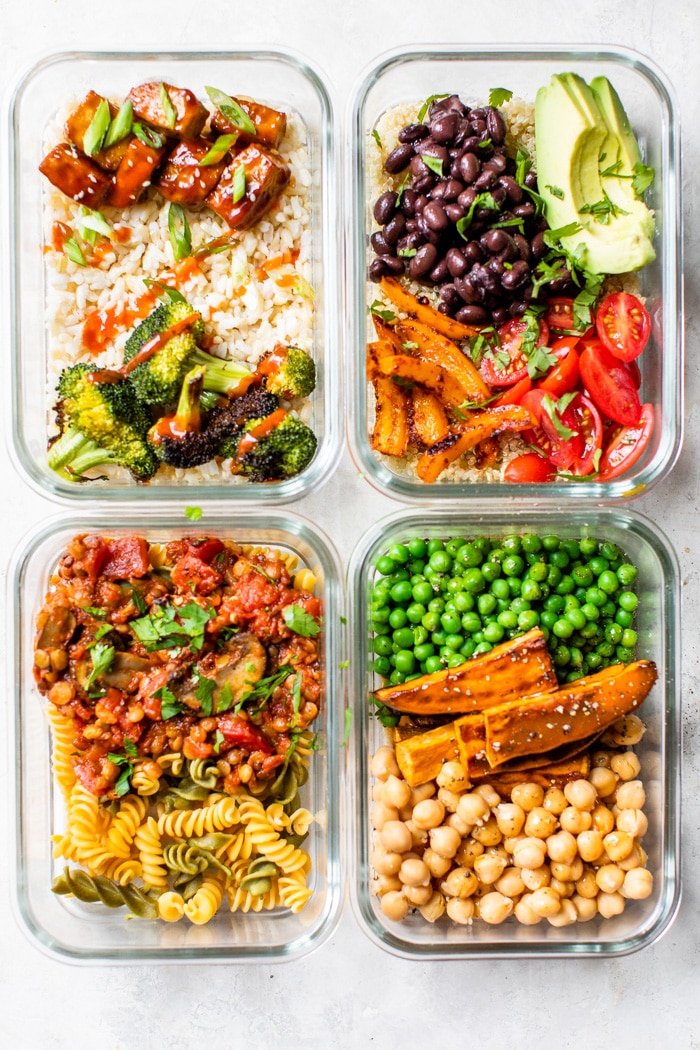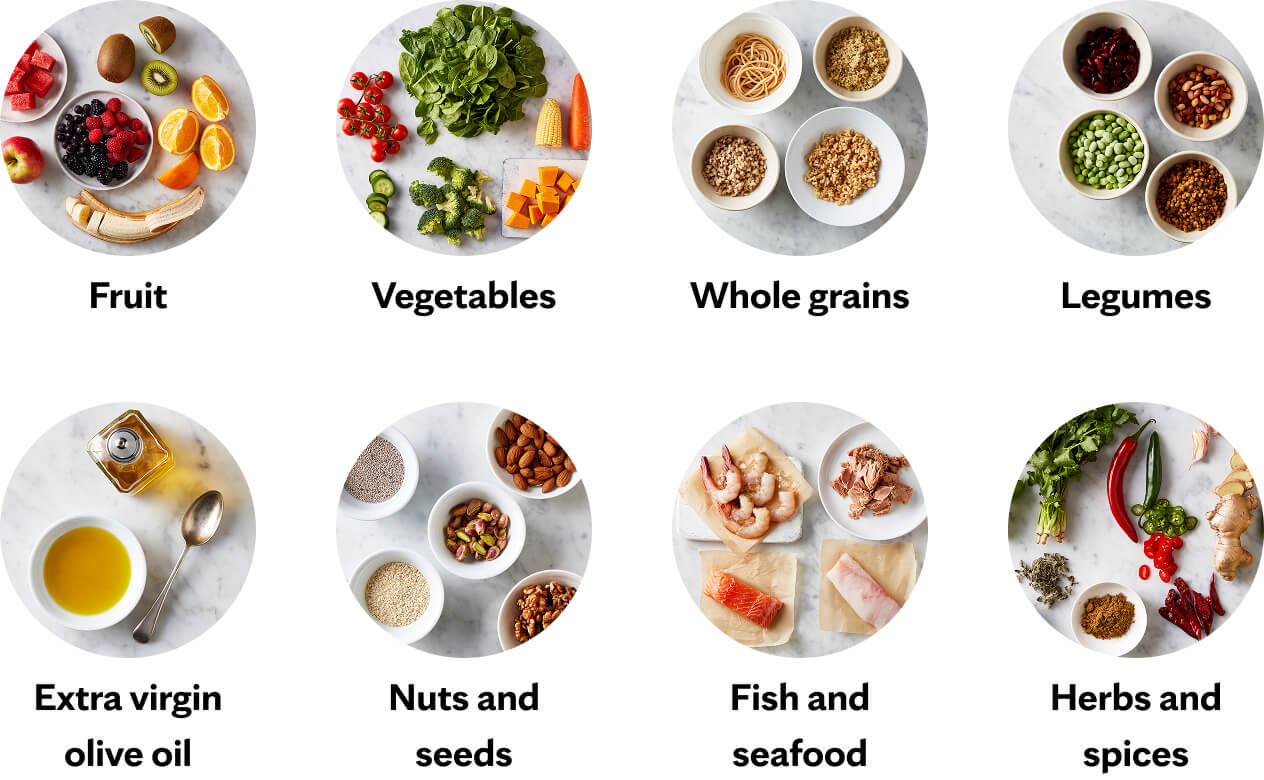Plant-Forward Eating: The Complete Guide to Better Health in 2025
Plant-Forward Eating: The Complete Guide to Better Health in 2025
Plant-forward eating is revolutionizing how Americans approach nutrition, offering a flexible path to better health without eliminating foods you love. Unlike strict vegetarian or vegan diets, this approach emphasizes plants while allowing occasional animal products, making it sustainable for busy lifestyles and diverse family preferences.

Quick Navigation
What Is Plant-Forward Eating?
Plant-forward eating prioritizes vegetables, fruits, whole grains, legumes, nuts, and seeds while treating animal products as supporting players rather than the main attraction. This flexible approach allows you to enjoy meat, dairy, and eggs in moderation while dramatically increasing your intake of nutrient-dense plant foods.
The key difference from other eating patterns:
- Vegan: Eliminates all animal products completely
- Vegetarian: Excludes meat but may include dairy and eggs
- Flexitarian: Primarily vegetarian with occasional meat consumption
- Plant-Forward: Emphasizes plants but includes small amounts of all food groups

Science-Backed Health Benefits
Research consistently shows that plant-forward eating patterns deliver remarkable health improvements. The American Heart Association reports that this approach significantly reduces risks of:
Cardiovascular Health
Studies demonstrate up to 32% reduction in heart disease risk among those following plant-forward diets. The Mediterranean diet, a prime example of plant-forward eating, has been shown in randomized clinical trials to reduce heart disease, stroke, and metabolic syndrome.
Chronic Disease Prevention
Plant-forward eating helps prevent and manage type 2 diabetes, high blood pressure, obesity, and certain cancers including colon, breast, and prostate cancer. The high fiber content and phytonutrients in plant foods provide powerful protective effects.
Longevity and Brain Health
Harvard research indicates that plant-forward diets support increased longevity, reduced depression risk, and better cognitive function in older adults. The anti-inflammatory compounds in plants appear to protect against age-related decline.
8 Proven Ways to Start Plant-Forward Eating
1. Fill Half Your Plate With Vegetables
Make vegetables the star of lunch and dinner. Choose a rainbow of colors to maximize nutrient diversity. Steam, roast, or sauté vegetables to preserve their flavor and nutritional value.
2. Rethink Meat's Role
Use animal protein as a garnish or side dish rather than the centerpiece. A 3-ounce portion (about the size of a deck of cards) provides adequate protein when combined with plant foods.
3. Start With Meatless Mondays
Dedicate one day per week to plant-only meals. Build these meals around beans, lentils, quinoa, and seasonal vegetables. Gradually add more meatless days as you discover new favorite recipes.

4. Choose Healthy Fats
Prioritize plant-based fats from olive oil, avocados, nuts, and seeds. These provide essential fatty acids and help your body absorb fat-soluble vitamins from vegetables.
5. Make Whole Grains Your Foundation
Replace refined grains with quinoa, brown rice, oats, and barley. These provide sustained energy, fiber, and important B vitamins often lacking in processed foods.
6. Experiment With Plant Proteins
Discover protein-rich alternatives like lentils (18g protein per cup), chickpeas (15g per cup), and quinoa (8g per cup). These complete proteins provide all essential amino acids your body needs.
7. Build Meals Around Salads
Create substantial salads with mixed greens, colorful vegetables, nuts, seeds, and beans. Top with a small amount of cheese or lean protein for satisfaction.
8. Embrace Natural Desserts
End meals with fresh fruit instead of processed sweets. Seasonal berries, stone fruits, and apples provide natural sweetness plus antioxidants and fiber.
Plant-Forward Meal Ideas for Every Day
Energizing Breakfasts
- Overnight oats with berries, nuts, and a drizzle of maple syrup
- Vegetable-packed omelet with spinach, tomatoes, and herbs
- Smoothie bowl with spinach, banana, protein powder, and coconut
Satisfying Lunches
- Mediterranean quinoa bowl with chickpeas, cucumber, and tahini dressing
- Lentil soup with whole grain bread and side salad
- Buddha bowl with roasted vegetables, brown rice, and avocado
Nourishing Dinners
- Vegetable stir-fry with tofu over cauliflower rice
- Black bean and sweet potato tacos with fresh salsa
- Zucchini noodles with marinara sauce and white beans

Addressing Common Concerns
Getting Enough Protein
Most Americans consume more protein than needed. Plant-forward eating easily meets protein requirements through combinations of legumes, grains, nuts, and vegetables. Even vegetables like broccoli and spinach contribute meaningful protein.
Family Acceptance
Start by modifying familiar recipes rather than introducing completely new dishes. Add extra vegetables to pasta sauce, use half meat and half lentils in tacos, or serve meat as an optional topping rather than mixing it into the main dish.
Budget Considerations
Plant-forward eating typically reduces grocery costs. Beans, lentils, and seasonal vegetables cost significantly less than meat. Buy in bulk, cook from scratch, and meal prep to maximize savings.
Frequently Asked Questions
Is plant-forward eating suitable for athletes and active individuals?
Absolutely! Many professional athletes follow plant-forward diets successfully. The high carbohydrate content provides excellent fuel for workouts, while plant proteins support muscle recovery. Focus on timing protein intake around workouts and ensuring adequate calorie intake.
How do I ensure I'm getting all essential nutrients?
A varied plant-forward diet provides most nutrients naturally. Pay attention to vitamin B12 (found in fortified foods or supplements), iron (combine with vitamin C for absorption), and omega-3 fatty acids (from walnuts, flax seeds, and algae-based supplements).
Can children thrive on plant-forward diets?
Yes, when properly planned. Children need adequate calories, protein, and key nutrients for growth. Include variety, make meals appealing, and consult with a pediatric nutritionist if you have concerns about meeting developmental needs.
What's the difference between plant-forward and Mediterranean diets?
The Mediterranean diet is actually a form of plant-forward eating! It emphasizes plants while including fish, poultry, and dairy in moderation. Both approaches prioritize whole foods and limit processed items, making them nearly interchangeable terms.
How quickly will I see health benefits?
Many people notice improved energy and digestion within 2-3 weeks. Measurable changes in cholesterol, blood pressure, and weight typically occur within 8-12 weeks. Long-term benefits for chronic disease prevention develop over months to years of consistent eating patterns.
Your Plant-Forward Journey Starts Today
Plant-forward eating isn't about perfection—it's about progress. Start with small changes that feel sustainable, like adding an extra serving of vegetables to dinner or trying one new plant-based recipe each week. Remember, even modest increases in plant food consumption provide measurable health benefits.
The beauty of plant-forward eating lies in its flexibility and inclusivity. Whether you're a dedicated carnivore looking to improve your health or someone interested in reducing environmental impact, this approach meets you where you are and grows with your comfort level.
Ready to transform your health with plant-forward eating? Share this guide with friends and family who could benefit from this flexible approach to better nutrition!